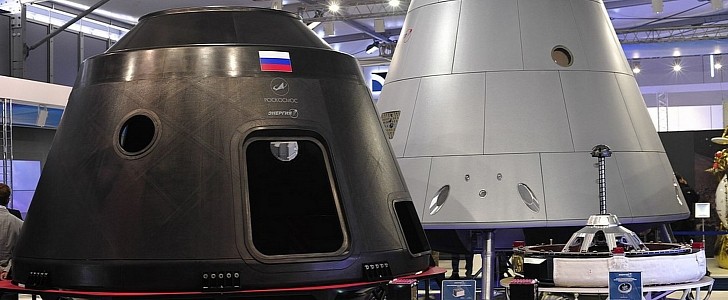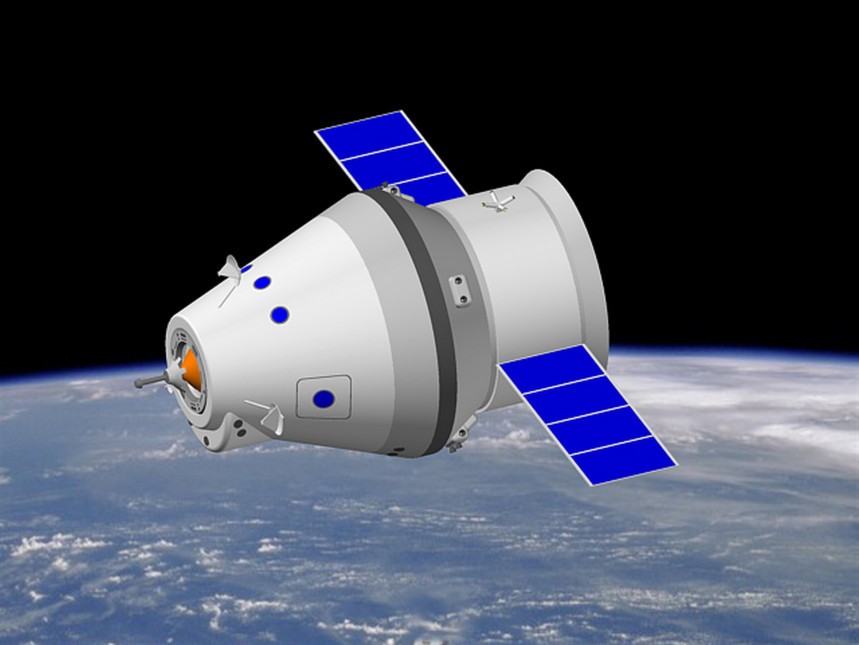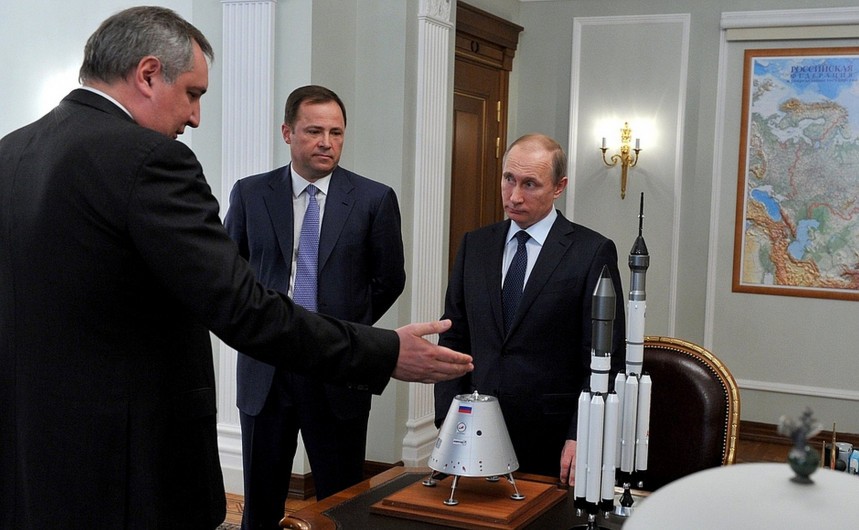With the imminent launch of NASA's Artemis I mission carrying a single Lockheed Martin Orion space capsule on a circumnavigation of the Moon, it may feel as though NASA and the ESA are alone in their race to the stars. But that'd be incorrect. The Chinese, Indians, and of course, the Russians are all vying for deep space once again.
In the case of Russia, there are more than a few reasons that should be self-evident if you keep up with the news on why they'd struggle to support themselves in space. But that doesn't mean they aren't trying. It was reported this month that the director of Roscosmos, Russia's state-sponsored space agency, Yuri Borisov, had met with a select group of Russia's most elite cosmonauts to discuss the future of Russia in space post-International Space Station.
In that meeting, it was reported that alongside the newly announced Russian Orbital Service Station, another topic was a vehicle to ferry cosmonauts to the new station. The craft in question is called Orel, Russia's answer to America's Orion. Designed by RKK Energia, a company whose first chief engineer, Sergei Korolev, was also instrumental in the first Soviet lunar program, Orel is being touted as every bit as capable of a human space transport vehicle as anything NASA is currently operating.
The project dates back to the mid-2000s, a period when Russia was attempting and ultimately failed to source funding from ESA member nations for a Russian answer to the American Space Shuttle, a vehicle known as Kliper. In the immediate aftermath of that project's end, Roscosmos began work on a more traditional capsule spacecraft. One in line with the design philosophy undertaken by NASA for their Constellation manned Lunar exploration mission.
Ultimately, Constellation would receive the ax in 2009, and only the Orion crew module would be spared. From there, the two spacecraft would set off down two very different development paths. On the American side, NASA's lunar programs of the 2010s were subject to harsh scrutiny and criticisms from global media. Who went on to call the newly formed Artemis program, its SLS booster rocket, and occasionally, even Orion itself, an expensive waste of money.
Meanwhile, Orel would continue development in a near complete media blackout. With only a few appearances in boilerplate form at a handful of Russian aerospace conventions. Designed to house a crew of four on a trip to low Earth orbit, the Moon, or potentially even to Mars, Orel is set to launch from the mysterious new Russian booster rocket, the Angara A5.
Similar in lifting power to the Delta IV Heavy rocket that boosted Orion to its first orbital test flight almost a decade ago, the Angara is slated to launch carrying an Orel capsule as soon as between 2023 and 2024. If successful, a mission involving live cosmonauts is bound to be attempted in the immediate years afterward, likely in 2025. Doing so by way of trans-lunar injection via Orel's liquid fuel main engines for a potential touchdown using a vehicle modifed with landing legs.
Whether or not this leads to Roscosmos being competitive with NASA for a race to a manned landing on the Lunar surface is still unclear. The prospects of the Russians being competitive in space at all, considering what's going on there outside of space travel, maybe somewhat laughable to some people. But remember, it's never a good idea to humble brag in the realm of space flight. The Russians can and have beaten the west in certain spaceflight categories before. Granted, most of it was ever such a long time ago.
Say what you will about Orion, but at least it's ostensibly ready to rock and roll. As of mid-September, 2022. the Artemis I SLS rocket still sitting on Launch Pad 39B a full two weeks after its first scheduled launch window. It's an indicator that, at the very least, the second great space race is still very much just a competitive endeavor.
Whoever reaches the Moon and then Mars first remains to be seen, but it's sure to be a heck of an experience finding out.
In that meeting, it was reported that alongside the newly announced Russian Orbital Service Station, another topic was a vehicle to ferry cosmonauts to the new station. The craft in question is called Orel, Russia's answer to America's Orion. Designed by RKK Energia, a company whose first chief engineer, Sergei Korolev, was also instrumental in the first Soviet lunar program, Orel is being touted as every bit as capable of a human space transport vehicle as anything NASA is currently operating.
The project dates back to the mid-2000s, a period when Russia was attempting and ultimately failed to source funding from ESA member nations for a Russian answer to the American Space Shuttle, a vehicle known as Kliper. In the immediate aftermath of that project's end, Roscosmos began work on a more traditional capsule spacecraft. One in line with the design philosophy undertaken by NASA for their Constellation manned Lunar exploration mission.
Ultimately, Constellation would receive the ax in 2009, and only the Orion crew module would be spared. From there, the two spacecraft would set off down two very different development paths. On the American side, NASA's lunar programs of the 2010s were subject to harsh scrutiny and criticisms from global media. Who went on to call the newly formed Artemis program, its SLS booster rocket, and occasionally, even Orion itself, an expensive waste of money.
Similar in lifting power to the Delta IV Heavy rocket that boosted Orion to its first orbital test flight almost a decade ago, the Angara is slated to launch carrying an Orel capsule as soon as between 2023 and 2024. If successful, a mission involving live cosmonauts is bound to be attempted in the immediate years afterward, likely in 2025. Doing so by way of trans-lunar injection via Orel's liquid fuel main engines for a potential touchdown using a vehicle modifed with landing legs.
Whether or not this leads to Roscosmos being competitive with NASA for a race to a manned landing on the Lunar surface is still unclear. The prospects of the Russians being competitive in space at all, considering what's going on there outside of space travel, maybe somewhat laughable to some people. But remember, it's never a good idea to humble brag in the realm of space flight. The Russians can and have beaten the west in certain spaceflight categories before. Granted, most of it was ever such a long time ago.
Say what you will about Orion, but at least it's ostensibly ready to rock and roll. As of mid-September, 2022. the Artemis I SLS rocket still sitting on Launch Pad 39B a full two weeks after its first scheduled launch window. It's an indicator that, at the very least, the second great space race is still very much just a competitive endeavor.









